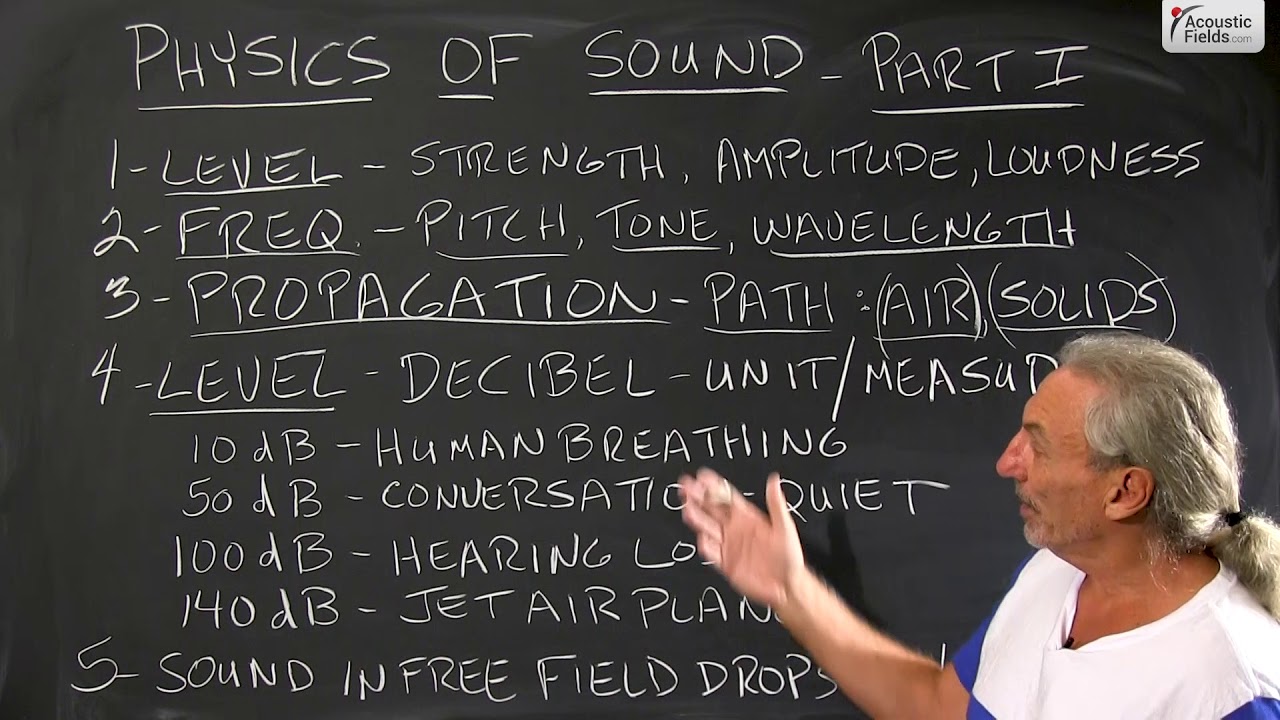Let’s get back to basics a little bit and talk about some of the qualities and characteristics and the physics of sound. We’re going to call this part I, we’ll probably do two or three parts on this.
There’s 3 major parts that we need to look at when we’re dealing with audio in our rooms. We have level, frequency and propagation. Level is the strength, the amplitude, the loudness, okay? So that’s one of the characteristics of the physics of sound. Frequency is the other one. What do we have for frequency? Pitch, tone and wavelength, right? Those are the three. You’ve all heard those tones. You’ve all head about tones, you’ve all heard about pitch, you’ve all heard about wavelength but I want you to see how it all fits into the bigger picture.
So often in acoustics we get these little tidbits of information. We get the word pitch, we get the word strength, we get the word amplitude but we don’t know how it relates. These are micro tactics if you will into a larger sound strategy of physics. So we have to kind of look at the terms that we see every day and see how they fit into a big structure.
So propagation, what’s the path? Air, solids, water, liquids. So sound can go through a lot of different propagation or pathway. So keep all that in mind. What do we focus on mainly with audio? Well, air and solids. Because we’ve got our room that the audio is achieved in and then we have the structure, we have the absorption and diffusion that we have to work with, too.
So all of these things have a unit of measure. So the physics of sound includes level, frequency, propagation and the decibel is the unit of measure that we use. So let’s look at some examples. 10 dB: human breathing. That’s a good benchmark for getting a handle on things. 50 dB: normal conversation. Probably what we’re running at about right now. 100 dB: this is where we have the hearing loss. You have to be real careful. And then a 140 dB for an extreme would be a jet engine, a dragster. I did some measuring one time at a track. It was a 160. That’s the start line. You have to be very, very careful, okay?
What do we know, what’s some of the characteristics about energy? We know that in a free field with no obstruction that the strength drops by 6 dB for every doubling of distance. So each one of these level, frequency and propagation have characteristic. So the level or the strength of the signal we know that it drops 6 dB by every doubling of distance. So keep those characteristics in mind. The next video we’ll talk about frequency and propagation.
—
This is an unedited transcript from our video series from Acoustic Fields. There will be some errors in grammar and sentence structure that occur during this translation process.
For complete understanding and comprehension, please view the video which is included in this text. For any additional information regarding this topic or others relating to room acoustics, please contact us directly at:
P: 520 – 392 – 9486







